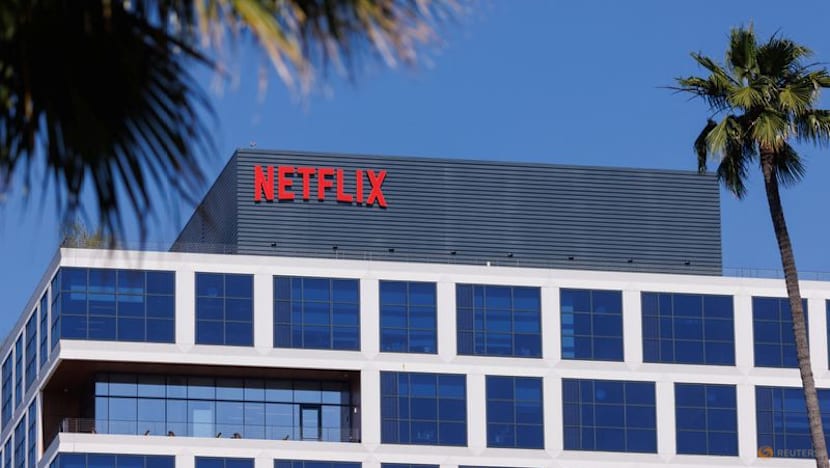Business
Netflix Faces Key Test: Can Ads and Gaming Drive Growth?

Netflix’s stock market performance, which has soared to approximately $120 billion this year, faces a critical challenge as the company prepares to report its third-quarter results on September 30, 2025. Investors are particularly focused on whether Netflix’s significant investments in advertising and video gaming can sustain the growth that has made it a favorite on Wall Street.
The upcoming earnings report is expected to showcase a strong content lineup, including the highly anticipated “KPop Demon Hunters,” which has already become the platform’s most successful film. Additionally, the second season of “Wednesday” is set to contribute to what analysts predict will be Netflix’s fastest revenue growth in over four years. The final season of “Stranger Things,” slated for release later this year, is also expected to bolster subscriber engagement.
Despite these promising developments, there are growing concerns among investors that Netflix’s rapid expansion may be slowing. The company has refrained from sharing subscriber numbers since earlier this year, redirecting focus toward financial indicators like revenue and profit. This strategic pivot has prompted Netflix to explore new areas, particularly video gaming, which has faced challenges amid leadership changes and evolving strategies.
According to reports from the Wall Street Journal, Netflix has invested approximately $1 billion into acquiring gaming studios and developing its gaming business, which currently features more than 120 mobile games. Titles include popular franchises such as Rockstar Games’ “GTA: San Andreas” and original games tied to Netflix series, like “Squid Game: Unleashed.” Recently, Netflix announced plans to introduce family-friendly party games like “Boogle Party” and “Pictionary: Game Night” for television.
Challenges in Gaming Expansion
Despite these efforts, Netflix’s gaming initiative has produced only a modest increase in user engagement. An analysis by the technology research firm Omdia found that time spent on video games has risen by less than 0.5 percent since their launch over four years ago. Co-CEO Greg Peters, who is largely credited with the gaming strategy, compared the gaming expansion to Netflix’s entry into the Japanese market, where brand recognition was initially low. He stated, “We just did the 10th Anniversary in Japan … but it took us a long time. The gaming situation is not dissimilar to that.”
The difficulties faced by Netflix in establishing a successful gaming division are not unique to the company. Other media giants, including Warner Bros Discovery, have struggled to monetize hit films through gaming ventures. As noted by Michael Pachter, managing director of strategic planning at Wedbush Securities, Netflix lacks a robust portfolio of iconic intellectual properties compared to competitors like Warner Bros, which owns the rights to DC Comics.
Data from Sensor Tower indicates that “GTA: San Andreas” remains the most downloaded game within Netflix’s offerings, suggesting that the company’s original intellectual properties do not possess the same market appeal as established franchises. According to analyst Rob Gallagher from Omdia, the disconnect between Netflix’s gaming offerings and its core business model complicates user engagement, as most subscribers prefer a passive viewing experience.
Advertising Tier Gains Traction
In addition to gaming, Netflix is focusing on its ad-supported subscription tier, which is anticipated to become a significant driver of growth in the coming year. This tier has already attracted over half of the company’s new subscribers, with approximately 94 million users as of May 2025. While the exact revenue generated by this tier has not been disclosed, analysts anticipate it could contribute around $662.3 million in revenue for the third quarter, according to data compiled by LSEG.
Overall, Netflix is projected to report a revenue increase of 17.2 percent, reaching $11.51 billion, while net profit is expected to rise by 27 percent to $3.01 billion. Despite these optimistic figures, some analysts express caution. Brian Mulberry, senior portfolio manager at Zacks Investment Management, commented, “We understand why they’re taking these measures to have diverse streams of revenue, but in the short term, they are not profitable segments. However, we will certainly want to see that develop over the next couple of quarters.”
As Netflix navigates these complex challenges, the outcomes of its advertising and gaming initiatives will be closely monitored by investors and analysts alike, with implications for its future growth trajectory.
-

 Business5 months ago
Business5 months agoKenvue Dismisses CEO Thibaut Mongon as Strategic Review Advances
-

 Lifestyle4 months ago
Lifestyle4 months agoHumanism Camp Engages 250 Youths in Summer Fest 2025
-

 Sports4 months ago
Sports4 months agoDe Minaur Triumphs at Washington Open After Thrilling Comeback
-

 Sports5 months ago
Sports5 months agoTupou and Daugunu Join First Nations Squad for Lions Clash
-

 Top Stories5 months ago
Top Stories5 months agoColombian Senator Miguel Uribe Shows Signs of Recovery After Attack
-

 World5 months ago
World5 months agoASEAN Gears Up for Historic Joint Meeting of Foreign and Economic Ministers
-

 Health4 months ago
Health4 months agoNew Study Challenges Assumptions About Aging and Inflammation
-

 Business5 months ago
Business5 months agoOil Prices Surge Following New EU Sanctions on Russia
-

 Entertainment4 months ago
Entertainment4 months agoDetaşe-Sabah Violin Ensemble Captivates at Gabala Music Festival
-

 Entertainment4 months ago
Entertainment4 months agoBaku Metro Extends Hours for Justin Timberlake Concert
-

 Top Stories5 months ago
Top Stories5 months agoRethinking Singapore’s F&B Regulations Amid Business Closures
-

 Business5 months ago
Business5 months agoU.S. House Approves Stablecoin Bill, Sends to Trump for Signature









